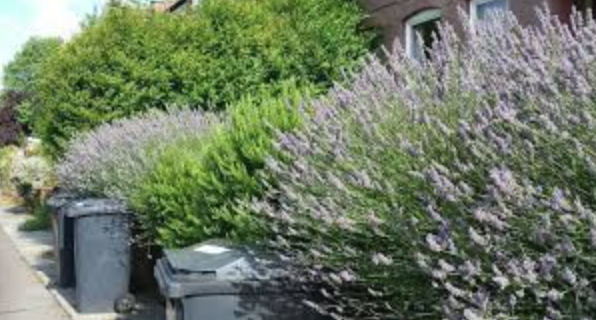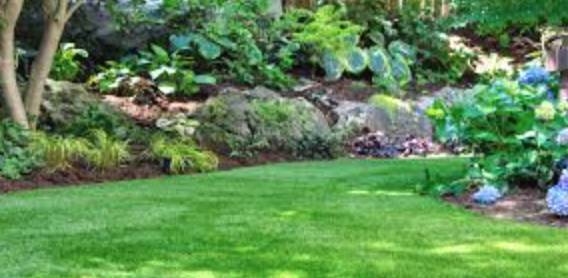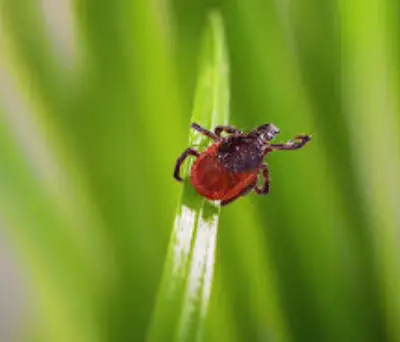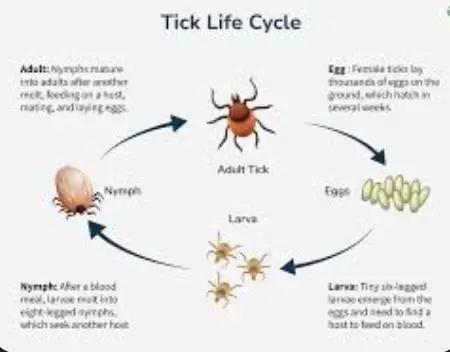Prevent ticks with natural landscaping before they become a problem to you or your pets. Ticks love environments where they can easily hitch a ride on both two-legged and four-legged visitors. Think tall grasses, leaf piles, and shaded areas—these are like paradise for ticks. If any of these exist in your yard, it might just be the equivalent of a tick hotel.

Another big attraction for ticks is moisture. Wet spots from poor drainage, overwatered gardens, or areas with inadequate sunlight provide an ideal habitat for them. They thrive where humidity levels are high, so consider how water flows and collects in your yard.

Wildlife might be another reason ticks are crashing your outdoor hangout. Small mammals like mice and chipmunks are hosts for these pests. If you live in an area bustling with wildlife, they might be bringing ticks along with them.

Understanding these factors helps to pinpoint where ticks might be lurking. By being aware of what attracts ticks, you can take visible steps to ensure your yard isn’t the place they want to be. Managing and maintaining the yard’s terrain and vegetation will go a long way toward keeping these unwelcome guests at bay.
Natural Landscapes Prevent Ticks: Plants, Flowers, and Trees That Deter Ticks
Imagine stepping into your yard and not having to worry about ticks. Certain plants, flowers, and trees can help make this a reality. For starters, lavender and rosemary are not only beautiful but also naturally repel ticks with their aromatic oils.

Marigolds are another great addition. These bright flowers contain pyrethrum, a compound often used in insect repellents. Similarly, the strong scent of mint plants can keep ticks at bay, and they’re easy to maintain, whether in pots or garden beds.

For tree options, the aptly named “tick-tubes” from white-footed mice can be taken advantage of by using cotton treated with permethrin inside pine or cedar trees. However, if maintaining trees isn’t feasible, creating small barricades using cut branches can also deter ticks.
Integrating these plants into your landscape isn’t just about functionality; it’s also about enhancing the visual appeal of your outdoor space. Group these plants in sunny areas where ticks are least likely to hide. A well-thought-out placement maximizes their protective benefits and contributes to a vibrant, healthy yard.
Beyond plants, using natural mulch like cedar chips can discourage tick presence, not only adding a pleasant scent but also providing a non-inviting environment for ticks. Making strategic choices in your landscaping approach isn’t just green – it’s also smart protection.
Innovative Landscaping Techniques to Prevent Ticks
Designing your yard with tick prevention in mind requires a bit of creativity and planning. Start by considering the layout. Creating a clear boundary between wooded areas and your lawn using wood chips or gravel can prevent ticks from migrating to grassy spaces.

Maintaining a clean and clutter-free yard is essential. Regularly removing leaf litter, grass clippings, and brush keeps ticks from setting up shop. These materials hold moisture and provide a perfect place for ticks to hide.
Consider adding sun-loving plants to open areas, as ticks avoid sun-baked spaces. Setting up a well-chosen array of these plants will not only beautify your yard but also make it less appealing to ticks.

Creating a tick-safe zone involves more than just plant selection. Installing simple barriers like fences can help keep out larger wildlife that might bring ticks into your yard. Additionally, keeping play areas and patios away from tree lines reduces tick encounters.
Innovative design isn’t just about aesthetics; it’s also about functionality. Each choice you make should have multiple benefits, like improving your yard’s look while cutting down on maintenance time and keeping ticks at bay. A strategic use of space helps balance enjoyment and safety.
Sustainable Practices for Long-Term Tick Prevention
Keeping ticks out isn’t just a one-time project; it’s a long-term commitment to maintaining your outdoor space. Regular yard upkeep is crucial. Mow your lawn frequently, ensuring grass stays short. Ticks love tall, unkempt grass, so a regular trim can be a great deterrent.
Natural predators are your allies in this fight. Birds like chickens and guinea fowl are known for munching on ticks, so encouraging a habitat for these creatures can naturally reduce tick numbers. Consider adding birdhouses or small water features to attract them.

Compost correctly to manage yard waste without creating tick-friendly piles or habitats. Well-managed composting not only enriches your soil but also minimizes areas where ticks can hide.
Organic pest control solutions, such as neem oil or diatomaceous earth, can be effective alternatives to chemicals. They work well in repelling ticks without harming the environment, ensuring the safety of pets and family.
Adopt a sustainable approach by assessing your yard’s health. Correct drainage issues to prevent excess moisture and replace invasive plants with native varieties that support local ecosystems. These actions improve your landscape’s resilience, keeping ticks and other pests at bay.
In Conclusion To How To Prevent Ticks With Natural Landscaping
Preventing ticks in your yard is a major step to keep yourself, family and pets safe from tick borne illnesses. Although you may not be able to keep them all away, the information you found here will substantially keep the tick population down in your yard. It’s really not hard to follow most of the above suggestions but they will take some planning and work.
If you have any questions or concerns about any of the information in this article, please feel free to reach out below in the comments section so that we can help you find the answers you’re looking for. Thank you for visiting fleasbgone.org 🙂





